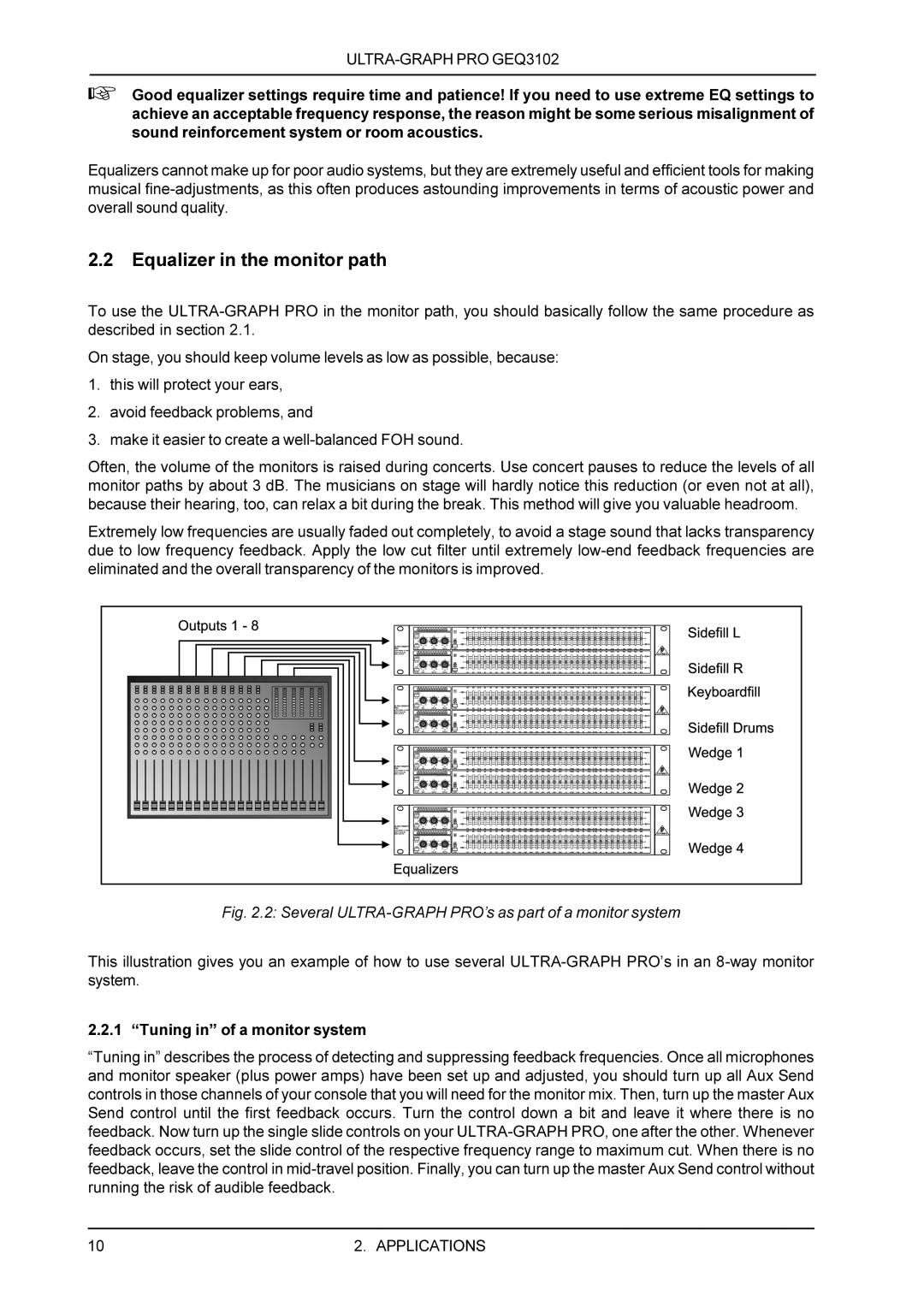GEQ3102 specifications
The Behringer GEQ3102 is a powerful 31-band graphic equalizer known for its exceptional performance and versatility, making it an ideal tool for sound engineers, musicians, and audio enthusiasts alike. Designed to provide precise control over audio frequencies, this graphic equalizer features two separate channels, allowing for comprehensive sound shaping in a variety of settings such as live performances, studio recordings, and installations.One of the standout features of the GEQ3102 is its 31 bands of equalization. Each band operates at 1/3-octave intervals, spanning a frequency range from 20 Hz to 20 kHz. This extensive range enables users to fine-tune audio signals with remarkable detail. The equalizer provides a 12 dB boost or cut per band, allowing for substantial adjustments in frequency response to tailor the sound to the specific needs of each environment.
In addition to its impressive frequency handling, the GEQ3102 incorporates high-quality components to ensure clean and transparent audio. The use of low-noise op-amps and precision resistors minimizes distortion and colorations, delivering true sound reproduction. The equalizer is built on a robust chassis, capable of enduring the rigors of touring and live sound applications.
Another important characteristic of the GEQ3102 is its performance-enhancing technologies, which include boost/cut faders and a bypass switch. The faders allow users to make quick and intuitive adjustments, while the bypass function enables instant comparison between the equalized and unprocessed audio. This feature is especially useful for evaluating the impact of adjustments and ensuring the desired sound.
Furthermore, the GEQ3102 is designed with flexible connectivity options, including balanced XLR and TRS inputs and outputs. This ensures compatibility with a wide range of audio equipment, enhancing the versatility of the unit. Additionally, the graphic equalizer features LED level indicators for each channel, offering real-time monitoring of the signal level and ensuring optimal performance.
In summary, the Behringer GEQ3102 is an excellent choice for anyone seeking a reliable and effective graphic equalizer. With its extensive 31-band range, high-quality construction, and user-friendly design, it provides the necessary tools to shape sound accurately and effectively, making it a staple in any audio professional's toolkit. Whether for live sound reinforcement or studio applications, the GEQ3102 is sure to deliver exceptional audio performance.

